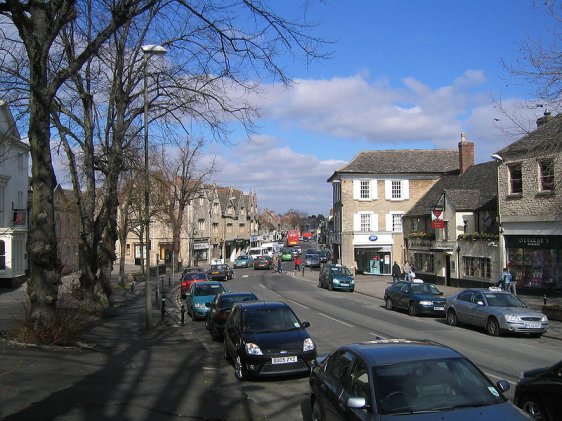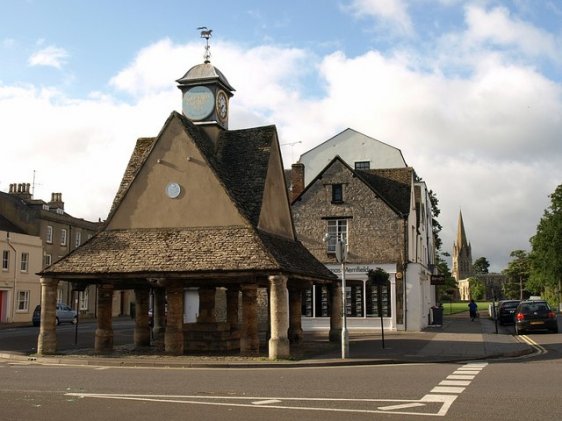 Witney, Oxfordshire, England: Source: https://commons.wikimedia.org/wiki/File:WitneyHighStreet.jpg
Witney, Oxfordshire, England: Source: https://commons.wikimedia.org/wiki/File:WitneyHighStreet.jpgAuthor: AlanFord

Witney is a town in West Oxfordshire, England. It is situated on the River Windrush, about 19 km (12 mi) to the west of Oxford. The town has a population approaching 25,000 people (2012 estimate).
The history of Whitney goes back to the Anglo-Saxon period. It was first documented in AD 969 in a Saxon charter, where it was mentioned as Wyttannige. When the Normans compiled the Domesday Book in 1086, the town was listed as Witenie.
Witney received a market charter in the Middle Ages, allowing it to hold a market on Thursdays and Saturdays. The buttercross marks the location of the Market Square in the heart of town. Whitney benefited from its location by the River Windrush which provided water supply for running its mills. During the Middle Ages it developed into a center for wool, particularly the manufacture of woollen blankets. The town once had five major blanket factories, but all of these is today history, with the closure of the last blanker maker in 2002.
 Witney Buttercross: Source: https://commons.wikimedia.org/wiki/File:Buttercross,_Witney_-_geograph.org.uk_-_871348.jpg
Witney Buttercross: Source: https://commons.wikimedia.org/wiki/File:Buttercross,_Witney_-_geograph.org.uk_-_871348.jpgAuthor: Derek Harper

Visiting Witney
From London, take the M40 motorway to Junction 8, where you continue heading west on the A40 road, past Oxford and Eynsham before arriving in Witney.Places of Interest in Witney
- Buttercross: Market pavilion built in 1600. Its clock was added in 1683.
- Church of St Mary the Virgin: Anglican parish church dating back to Norman times. It was rebuilt and remodelled over the centuries.
- Cogges Manor Farm Museum: Museum occupying a 13th century manor house and farm in the Cogges neighborhood. It provides a glimpse into the rural life in the area.
- Friends Meeting House: Quaker place of worship in the Wood Green neighborhood built in the 18th century. Since 1997 the Quakers have moved to occupy the former Corn Exchange.
- Holy Trinity Church: Anglican parish church in the Wood Green neighborhood of Witney. It was built in 1849 in the Early English style.
 Latest updates on Penang Travel Tips
Latest updates on Penang Travel Tips

Copyright © 2003-2025 Timothy Tye. All Rights Reserved.

 Go Back
Go Back